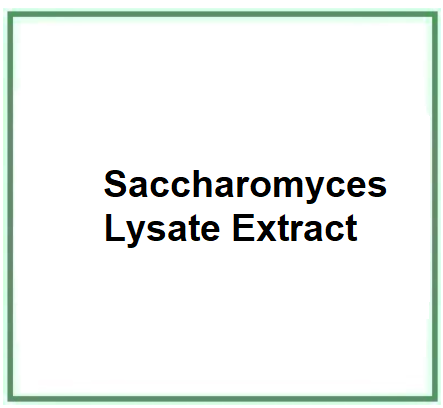Saccharomyces Lysate Extract is a compound of natural origin, an extract derived from the lysate of yeast.
The name describes the structure of the molecule
- "Saccharomyces" refers to a genus of yeasts. These organisms are commonly used in fermentation processes, such as beer and bread production.
- "Lysate" indicates that the product is derived from cells that have been lysed, or broken apart, to release their contents.
- "Extract" refers to a substance obtained by extracting desired components, in this case, from the Saccharomyces lysate.
Description of raw materials used in production
- Saccharomyces - A type of yeast.
- Solvent - Commonly water or buffered solutions.
Step-by-step summary of industrial chemical synthesis process
- Cultivation - The Saccharomyces yeast is cultivated in an appropriate growth medium allowing it to grow and multiply.
- Harvesting - Once desired growth is achieved, the yeast is harvested using centrifugation or filtration.
- Lysis - The harvested yeast is subsequently lysed, or broken down, using physical, chemical, or enzymatic methods to release the contents inside the cells.
- Filtration - The lysed product is then filtered to remove solid particles and cellular debris.
- Concentration - The filtrate can be concentrated, if necessary, to yield a richer extract.
- Purification - Further purification may be carried out, if needed, using techniques like chromatography.
- Quality Control - A quality check is done on the extract to ensure it meets the desired specifications.
What it is for and where
Cosmetics
Humectant. Hygroscopic compound used to minimise water loss in the skin and to prevent it from drying out by facilitating faster and greater absorption of water into the stratum corneum of the epidermis. The epidermis is the most superficial of the three layers that make up human skin (epidermis, dermis and hypodermis) and is the layer that maintains hydration in all three layers. In turn, the epidermis is composed of five layers: horny, the most superficial, granular, spinous, shiny, and basal. Humectants have the ability to retain the water they attract from the air in the stratum corneum and have the function of moisturising the skin. They are best used before emollients, which are oil-based.
Skin conditioning agent. It is the mainstay of topical skin treatment as it has the function of restoring, increasing or improving skin tolerance to external factors, including melanocyte tolerance. The most important function of the conditioning agent is to prevent skin dehydration, but the subject is rather complex and involves emollients and humectants that can be added in the formulation.
Commercial applications
Cosmetics. Used for its moisturizing and conditioning properties in skincare.
Anti-aging Products. Due to its regenerative and renewing properties, it's often featured in products designed to combat signs of aging.
Skin Protection. Known to boost the skin's natural defenses and shield from environmental stress.
Soothing Products. Used in products intended for sensitive or irritated skin due to its calming properties.
Acne Treatments. Can be included in acne care products for its properties that support cellular turnover.
![]() Saccharomyces Lysate Extract
Saccharomyces Lysate Extract 

